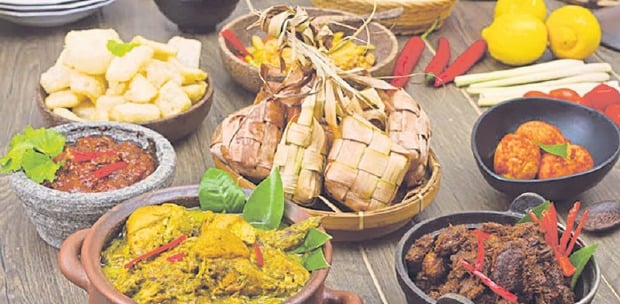A friend told me the other day he was sad to see leftover food ending up in rubbish bins at Hari Raya open houses he was invited to. So much good food was wasted, he said.
Food prices are skyrocketing everywhere and people in poor countries are suffering from hunger, but many Malaysians took food served during the festive season for granted.
Many do not realise that the food they could not finish and threw into rubbish bins could feed hundreds in Somalia or Ethiopia.
My friend had every reason to be upset because he has found it difficult to put food on the table for his wife and six children since the Covid-19 pandemic began two years ago.
Nevertheless, he is counting his blessings as his family is so much better off than those suffering from acute and chronic hunger in the African continent.
According to the United Nation's World Food Programme (WFP), more than 700 million people, or 8.8 per cent of the world's population, go to bed
on an empty stomach every night.
At the height of the pandemic at the end of 2020, 155 million people, or two per cent of the world's population, experienced acute hunger and required urgent assistance.
The WFP tracks core indicators of acute hunger, like household food consumption, livelihoods, child nutritional status, mortality and access to clean water
in poor countries, especially in Africa.
The organisation defines acute hunger as the short-term inability to meet food consumption requirements.
A more serious situation is chronic hunger, which the WFP defines as an inability to meet food consumption requirements for at least six months.
World hunger is not new and attempts to solve it have made headlines for decades.
I remember that back in 1985, a rock concert — Live Aid at Wembley Stadium in London — was held to raise money for the relief of famine-stricken Africans.
There were other similar concerts to raise money for African countries.
Today, the people in the African continent still suffer from hunger and food insecurity. According to the United Nations, of the 12 countries in the world with the highest prevalence of insufficient food consumption, nine are in Africa.
About 30 million Africans face the effects of severe food insecurity, including malnutrition, starvation and poverty.
Afghanistan is another trouble spot, with 11.3 million people experiencing acute food insecurity. More than 138,000 refugees returned to the country from Iran and Pakistan between January and March 2020, putting a strain on food resources.
I believe the reasons behind the food crisis around the globe involve conflicts or environmental challenges.
With the war raging in Ukraine and the persistent drought in Africa, the threat to food security is imminent.
Some food-producing countries have taken steps to stop the exports of food and food-based products. The world is on the brink of losing its sanity.
One huge contributor to the foof crisis is food waste. In one critical research, the UN found that one third of the food produced for human consumption is lost or wasted.
This amounts to about 1.3 billion tonnes of wasted food per year, worth approximately US$1 trillion.
If we were to lay the 1.3 billion tonnes of wasted food on a field, it could cover more than 10 football stadiums. There would be enough to feed two billion people.
That's more than twice the number of undernourished people across the globe. Consumers in rich countries waste almost as much food as the entire net food production of sub-Saharan Africa each year.
Last month, Housing and Local Government Minister Datuk Seri Reezal Merican Naina Merican said Malaysian households, on average, lose RM210 per month, or RM2,600 a year, in terms of food waste disposal costs.
What is more shocking is that Malaysians produce 38,000 tonnes of solid waste daily, and of that amount about 17,000 tonnes are food waste. An estimated 4,046 tonnes are avoidable food waste. Imagine that!
The writer, a former NST journalist, is a film scriptwriter whose penchant is finding new food haunts






